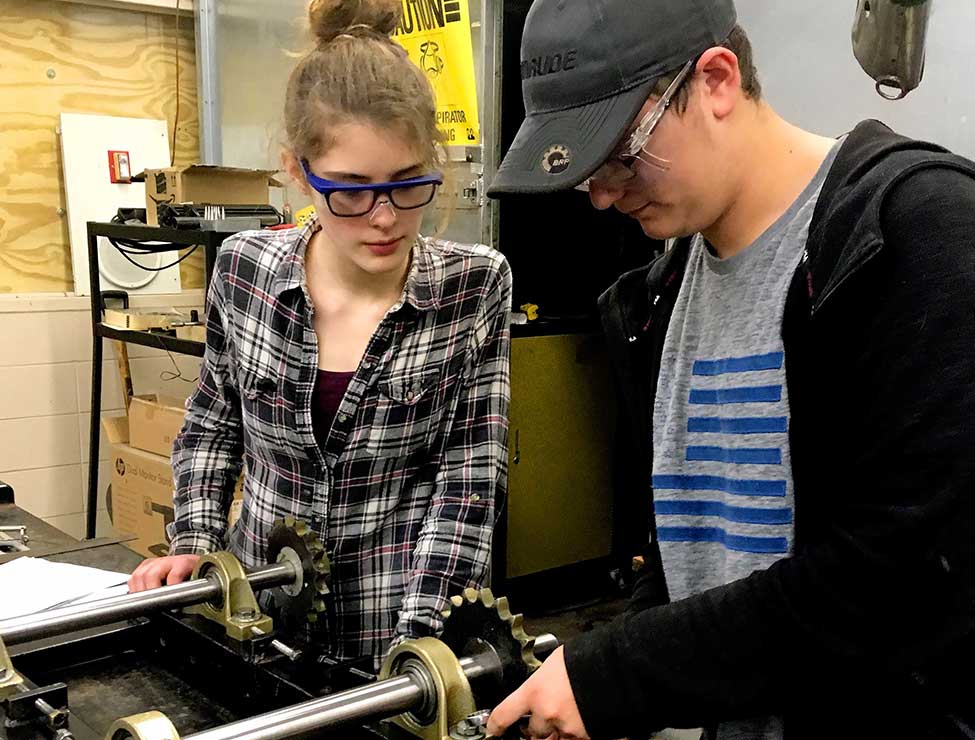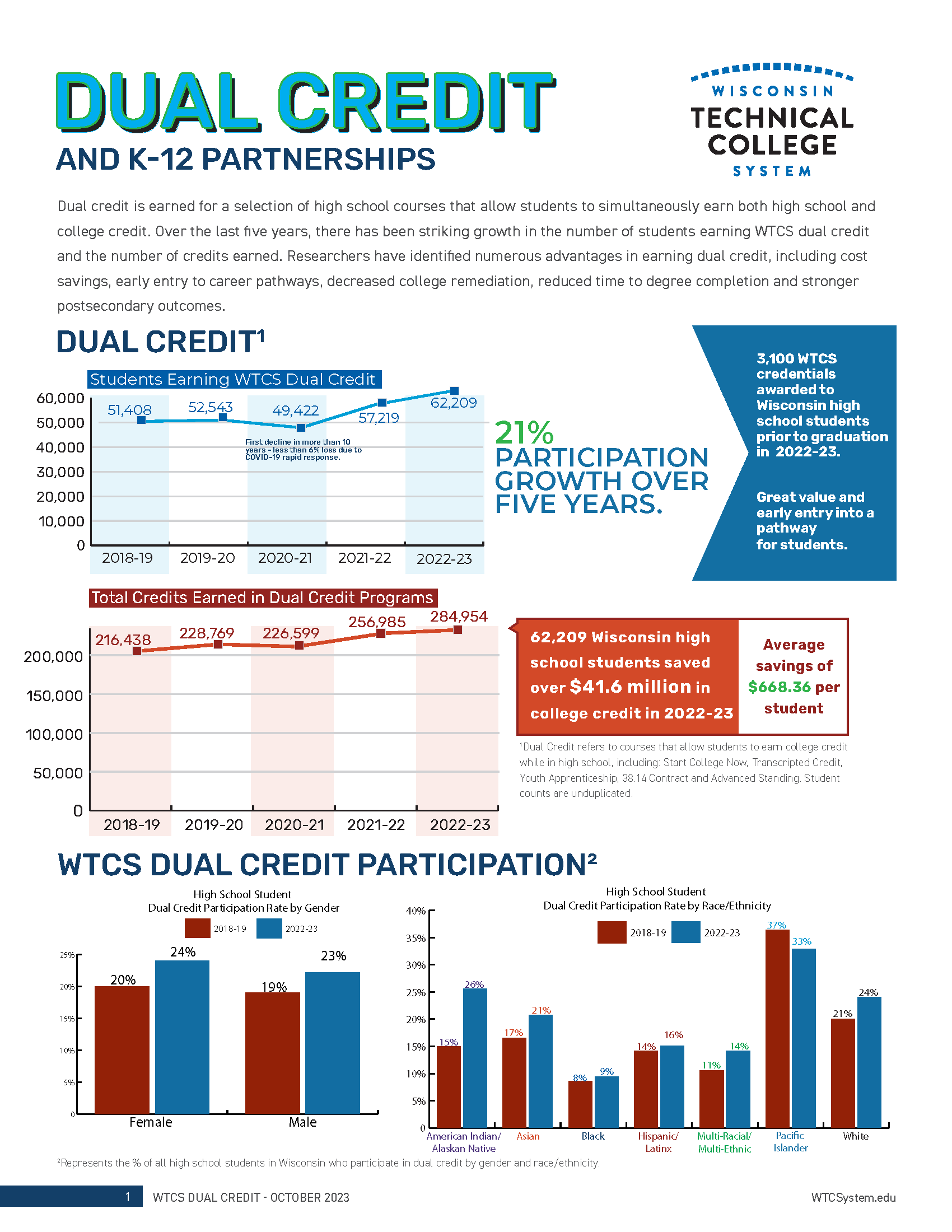Students
37%
participation growth over five years in the number of students earning college credit while still in high school

Credits
328883
college credits earned by high school students in 2024-25
Earn credit before college
Motivated high school students, or those who want more of a challenge, may be able to get a head start on their college education through Dual Enrollment or Dual Credit opportunities. Students who complete a college course successfully may earn college credit without the tuition expense, saving time and money toward their degree. Some students even graduate high school having already earned an associate degree.
Juniors and seniors who meet certain requirements in public high schools may take college courses at a Wisconsin technical college. The credits earned will apply to both high school and college graduation, and the cost is covered by the high school.
Dual credit options
There are various types of dual credit available to students, with slightly different applications.
- Start College Now
- Juniors and seniors may take a college class on a Wisconsin technical college campus along with college students.
- Youth Apprenticeship
- Juniors and seniors may take part in school- and work-based instruction. The high school teacher may contract with a technical college to teach the class, and the on-the-job training introduces students to potential future careers.
- Transcripted Credit
- A high school teacher, with the oversight of a college mentor, may provide the high school student the instruction and all the resources needed to complete a college class. The student receives a college transcript.
- 38.14 Contract
- This is a contract between the high school and the technical college to provide college-level instruction.
- Advanced Standing
- In this situation, a student takes an advanced-level course and earns credit in high school that is activated when the student enters a program at the college. There is an alignment between the outcomes of the high school and the college course.
Benefits of Dual Credit Programs
The benefits of dual credit are worthwhile. Students may save time and money by taking college courses while in high school since they are earning college credits at the expense of the school district. Some students may even complete a high school diploma and a technical college degree or diploma at the same time.
Dual enrollment students tend to have higher academic achievement in high school, greater completion rates of high school, college access and enrollment, college credits earned at no cost and higher rates of college degree completion. In addition, students may be more likely:
- to see themselves as a college student
- to have exposure to career content they may not have had in high school
- to have experience, success and confidence to be successful in college
- to earn college credits and perhaps even a degree or diploma in addition to the high school diploma
Requirements
Students who want to earn dual credit must be in good standing at the high school, they may need to apply to the college granting the credits, and they must be at least 16 years of age. All students should check with their technical college to make sure they understand and meet the requirements prior to enrolling.

How to Get Started
If a student is interested in earning college credit while in high school, they should talk with their school counselor to learn if they qualify and what is needed to enroll. Not all dual credit courses may apply to both the high school and college transcript.
Contact your college to learn more about dual credit options

Dual Credit
Students and families are increasingly interested in the ability of K-12 students to earn college credit while still in high school, saving them time and money after high school graduation.
Motivated students are now earning not only credit from a technical college, but they are earning technical college credentials - up to and including Associate Degrees - before high school graduation, at no cost to the student or family.
View the publication online here or download using the links below.

